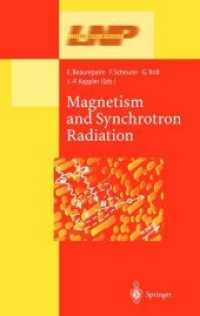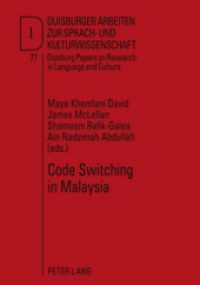- ホーム
- > 洋書
- > 英文書
- > Science / Mathematics
Full Description
This book presents a complete state of the art for different types of nanomaterial, their environmental fate, and their use in textile waste remediation. Nano-engineered materials can be better solution in finding solution of environmental sustainability more specific to the textile waste remediation.








